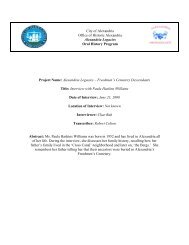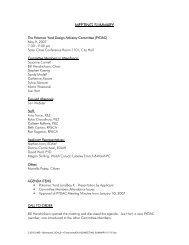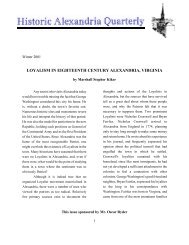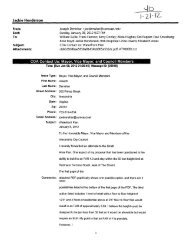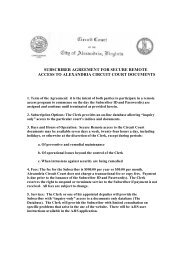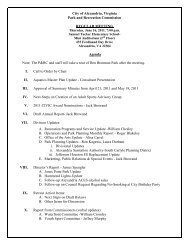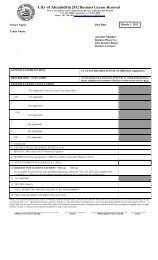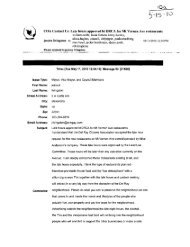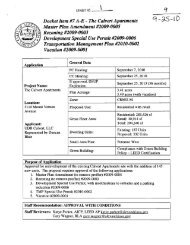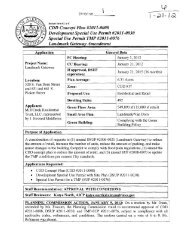Potomac Waterfront Flood Mitigation Study - City of Alexandria
Potomac Waterfront Flood Mitigation Study - City of Alexandria
Potomac Waterfront Flood Mitigation Study - City of Alexandria
You also want an ePaper? Increase the reach of your titles
YUMPU automatically turns print PDFs into web optimized ePapers that Google loves.
5.2 CALCULATION OF PROJECT BENEFITS<br />
Economic Valuation (Benefit-Cost Analysis)<br />
The benefits for each mitigation alternative were analyzed at a planning level, so assumptions<br />
were made to simplify the analysis. Instead <strong>of</strong> analyzing all flood depths at a structure for all<br />
flood elevations, each <strong>of</strong> the analyzed discrete flood event’s (extreme, intermediate, and<br />
nuisance) benefits were calculated then summed together. If an alternative did not provide any<br />
mitigation at a specific flood event, then no benefits were calculated.<br />
The following data were used to develop benefits as well as some cost data:<br />
Assessed Value <strong>of</strong> 406 properties (land and building value)<br />
United States Census Bureau Web site for annual business income<br />
Surveyed FFEs<br />
Business questionnaire regarding Hurricane Isabelle<br />
The steps for calculating benefits are outlined below.<br />
1. Determine the <strong>Flood</strong> Depth<br />
Structure FFEs for all potential flood prone structures were compared to the previously<br />
specified flood events (i.e., extreme, intermediate, and nuisance) for the different flood<br />
frequencies.<br />
Example: The home is a 2-story residential building located in the Jones Point study<br />
area. The FFE is 8.47 feet (with basement). The flood depth at the extreme flood event<br />
(10.2 feet NAVD88) in this case would be 1.73 feet.<br />
The following assumptions were made because <strong>of</strong> data limitations:<br />
All residential basements were considered finished.<br />
All basements were assumed to be the first floor flooded.<br />
All commercial buildings were assumed to not have basements.<br />
A comparison between the FFE and the LAG was performed, to determine if the FFE<br />
was the basement or a higher floor. The LAG was determined by known LAG data<br />
(surveyed information) or using the <strong>City</strong> <strong>of</strong> <strong>Alexandria</strong> topography.<br />
If the FFE was lower than the LAG, then the basement was determined to be the FFE;<br />
otherwise, the FFE was reduced by 8 feet to reflect the basement elevation.<br />
2. Calculate the Average Depth (only for residential structures)<br />
For residential structures, the average depth was used for all structures within a study<br />
area. A sensitivity analysis was performed for the Jones Point Area to determine the<br />
disparity between the benefit calculated for each house using individual depth data and<br />
using average depth data. In the final total benefit, only about a four percent difference<br />
occurs. For commercial structures, too many variables occur to make similar<br />
assumptions, so the flooding depth at each event was calculated on a structure-bystructure<br />
basis.<br />
28-JUL-10\\ 5-2





